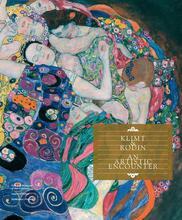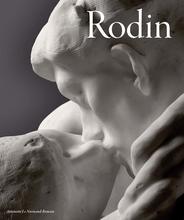More about Auguste Rodin
- All
- Info
- Shop

Sr. Contributor
Born poor to a police officer and seamstress, he ended his life baller status with the French government slavering to build a museum in his honor before he had even died. Receiving an honorary doctorate from Oxford University alongside Mark Twain gives an artist the right to call some shots.
His game-changing career was full of rejection. At 17, Rodin was thrice denied entrance to the prestigious Ecole des Beaux-Arts. Entries to the French Salon were rejected for being out of style with current trends. Eventually, he labored as a stoneworker and decorative sculptor to make ends meet. Fame inexorably found Rodin in the wake of The Age of Bronze in 1877. The sculpture shocked the establishment, its eerie realism spreading rumors that Rodin had formed the mold upon a living person. Like It's Always Sunny in Philadelphia taught us, a group always needs a wildcard. For the 19th century French art scene, Rodin was the wildcard. He was their Charlie.
After Age of Bronze, public and private commissions were readily available. Although, for years, Rodin kept making art people hated. His most prominent commissions were, separately, commemorating French luminaries Honore de Balzac and Victor Hugo. Neither ended well for Rodin. In both instances, the committee overseeing the project rejected Rodin's submissions as too shocking. The Hugo sculpture was a nude, which just wasn't going to happen. People would be looking at it, for gosh sakes. With the Balzac piece, Rodin missed deadlines for a decade finding the right feel. He even tracked down Balzac's tailor for exact measurements of the author's body. The final submission resulted in a lawsuit that lead to Rodin reimbursing the commissioning organization, essentially buying back the piece they asked him to make. Other works by Rodin caused riots in the streets upon installation. Rodin was a man who liked to watch the world burn. Or, he just couldn't give less of a crap about what people wanted from him.
The major relationship in his life was with Rose Beuret, a seamstress he met in 1864. They didn't marry until 1917, just weeks before her death. He liked it, but it took a while for him to put a ring on it. In between the start and culmination of the 53 year engagement, there were many affairs and dalliances. The most tempestuous of which began in his 50s with his 19-year old studio assistant named Camille Claudel. The affair with Camille was a decade-long endeavor that ended when Rodin refused to leave Rose, even after signing a formal contract stating he would. After the affair ended, Camille accused Rodin of plotting against her and appropriating her artistic ideas. She threw away her work and was interned in an asylum by her diplomat brother, where she lived for the next three decades until her death. While his artistic achievements are described today as the immediate precursor to modern sculpture, his way with the ladies shows that the wildcard with a beard is never a good choice.
Sources
- rodinmuseum.org/collections/collectiontheme/6.html
- metmuseum.org/toah/hd/rodn/hd_rodn.htm
- getty.edu/art/collection/artists/283/auguste-rodin-french-1840-1917/
- independent.co.uk/arts-entertainment/art/features/how-rodins-tragic-lover-shapted-the-history-of-sculpture-.html
Featured Content
Here is what Wikipedia says about Auguste Rodin
François Auguste René Rodin (/roʊˈdæn/;
French: [fʁɑ̃swa oɡyst ʁəne ʁɔdɛ̃]; 12 November 1840 – 17 November 1917) was a French sculptor generally considered the founder of modern sculpture. He was schooled traditionally and took a craftsman-like approach to his work. Rodin possessed a unique ability to model a complex, turbulent, and deeply pocketed surface in clay. He is known for such sculptures as The Thinker, Monument to Balzac, The Kiss, The Burghers of Calais, and The Gates of Hell.
Many of Rodin's most notable sculptures were criticized, as they clashed with predominant figurative sculpture traditions in which works were decorative, formulaic, or highly thematic. Rodin's most original work departed from traditional themes of mythology and allegory. He modeled the human body with naturalism, and his sculptures celebrate individual character and physicality. Although Rodin was sensitive to the controversy surrounding his work, he refused to change his style, and his continued output brought increasing favor from the government and the artistic community.
From the unexpected naturalism of Rodin's first major figure – inspired by his 1875 trip to Italy – to the unconventional memorials whose commissions he later sought, his reputation grew, and Rodin became the preeminent French sculptor of his time. By 1900, he was a world-renowned artist. Wealthy private clients sought Rodin's work after his World's Fair exhibit, and he kept company with a variety of high-profile intellectuals and artists. His student, Camille Claudel, became his associate, lover, and creative rival. Rodin's other students included Antoine Bourdelle, Constantin Brâncuși, and Charles Despiau. He married his lifelong companion, Rose Beuret, in the last year of both their lives. His sculptures suffered a decline in popularity after his death in 1917, but within a few decades his legacy solidified. Rodin remains one of the few sculptors widely known outside the visual arts community.
Check out the full Wikipedia article about Auguste Rodin





















